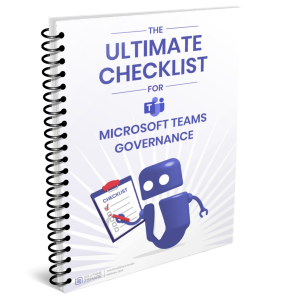Apply Governance Policies to Unmanaged Teams in Microsoft Teams
Teams Manager‘s „Unmanaged Bot“ addresses the issue of existing teams that were created without following an organization’s naming conventions or lifecycle policies. Such „unmanaged“ teams also often exist from the time period before a governance solution for Microsoft Teams was introduced. With the Unmanaged Bot, organizations can easily migrate existing teams into their governance strategy and apply governance policies to unmanaged teams.
Watch the video to see how to apply governance policies to pre-existing teams in Microsoft Teams:
How can I control unmanaged teams in Microsoft Teams?
Integration with Teams Manager
The Unmanaged Bot is a feature within Teams Manager, an app for Microsoft Teams governance, that you can access from the settings tab in the Expert mode.
Selection of Teams for Conversion
You have the option to select which unmanaged teams you want to convert into „managed teams“ to comply with your governance policies. This includes applying naming conventions and lifecycle management rules.
Approval Process
If your organization already uses an approval process for creating new teams, you can apply this process to the conversion of unmanaged teams. This ensures that changes to the unmanaged teams are reviewed and approved before the team’s structure and access is changed.
Option to Exclude Teams
If there are specific teams that should not be converted or do not require governance policies, you can exclude them from the process easily.
Automated Notifications
The integrated chatbot notifies team owners about the conversion process, ensuring transparency and involvement from the start.
Template Matching and Metadata
Team owners select a template that matches their team’s purpose. This template includes predefined governance policies. If the template requires additional information (metadata) for the naming convention, team owners must provide this during the conversion.
Finalization
After selecting the appropriate metadata and reviewing the information, including the new Team name as influenced by the naming convention, as well as the lifecycle, the team owner completes the conversion by clicking “create”. This applies the governance policies to the team.

Teams Manager for Unmanaged Teams: What are the Benefits for IT Administrators?
Standardization: Ensures all teams, including previously unmanaged ones, follow the organization’s naming conventions, making them easier to identify and manage.
Lifecycle Management: Applies lifecycle management policies to unmanaged teams, helping in automating the archiving or deletion of inactive teams and preventing sprawl.
Governance Control: Enhances overall governance of Microsoft Teams by bringing unmanaged teams under the organization’s policies, reducing risks and improving compliance.
Efficiency: IT administrators save time and effort by automating the process of standardizing team governance.
In summary, the Unmanaged Bot of Teams Manager supports organizations with teams migrations into governance, addressing the challenges of inconsistent team governance within Microsoft Teams. By automating the process of applying naming conventions and lifecycle policies to unmanaged teams, it allows IT administrators to maintain a well-organized, compliant, and efficient digital workspace.
Want to see it yourself? Simply book a quick demo and we’ll focus on your questions.
Learn how Unmanaged Bot can help with your unstructured teams:

Head of Marketing & Sales at Solutions2Share – Florian Pflanz has 6 years of M365 experience and has been involved in numerous projects concerning Microsoft Teams governance. In over 200 workshops, he has collected extensive knowledge and best practices regarding Microsoft Teams and companies’ management requirements.




